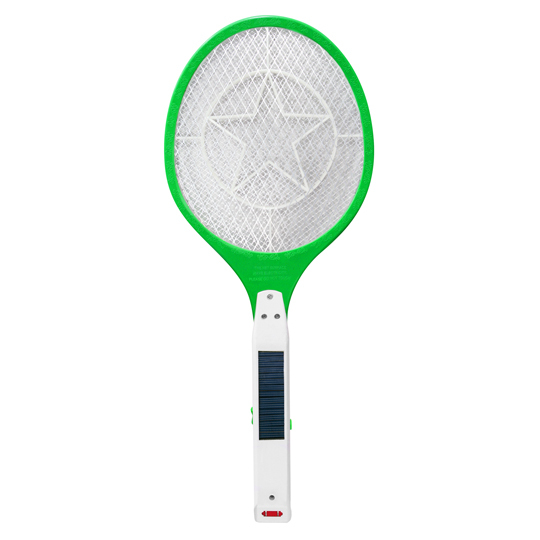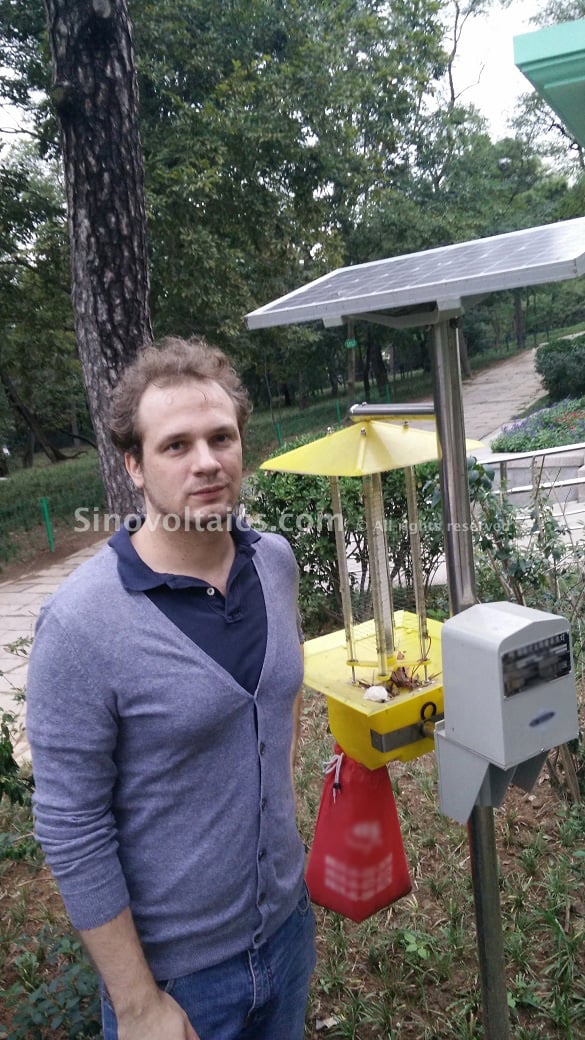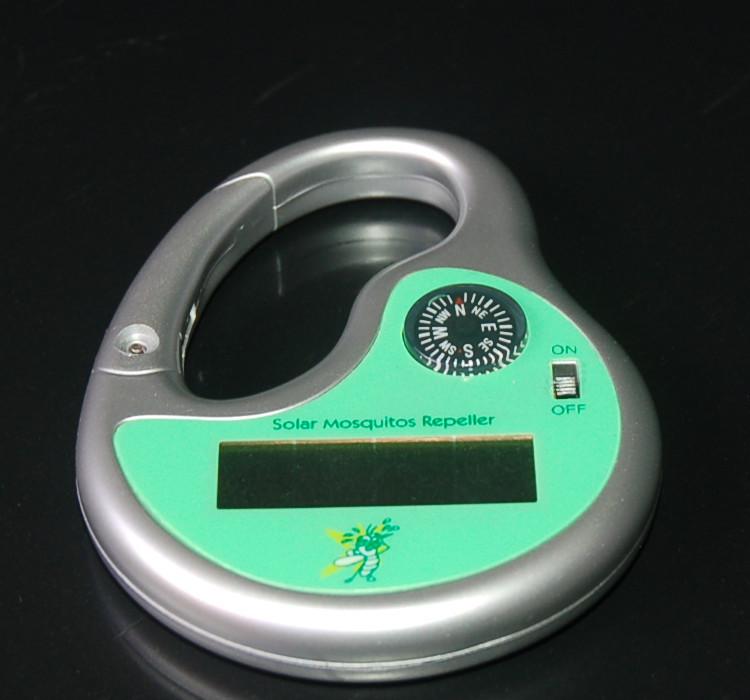Summer and sunshine – in many parts of the world this word combo undoubtedly points to the annual performance climax period of solar photovoltaic systems.
And: it is also the busiest period for disturbing, biting, disease-transmitting insects, ever ready to make your barbecue party or gardening work an itchy, unpleasant experience.
Since solar photovoltaics increasingly finds their way into our everyday life, it is not absurd to figuratively ask: are there ways to employ natural energy to combat a natural enemy?
Yes, there are. In this article, we will look at solar-powered electronic insect-control systems, how they work and the different technology types available.
Background
Mosquitos have been biting humans for thousands of years, yet ages of suffering only took a turn for the better with the invention of electronic insect zappers that have been around for over 80 years.
Known as electric bug zappers, electric pest repellers or more specifically: electric mosquito/ insect/ pest killers and formally: electronic insect-control systems, the first commercial devices have been produced in the USA as early as in the 1930s.
Restless research has led to the production of increasingly efficient systems and with the mass market solar energy boom that started in the early 2000s and enormously growing production capacities, especially in Asia, solar-powered insect control systems entered the markets only a few years after.
Nowadays, there are specialized solar companies mainly located in Asia that design and produce innovative everyday life solar-powered electrical appliances, and these include solar bug zappers as well.
Solar Bug Zappers – technology types
There are basically 3 system types of solar-powered electronic insect-control systems: light-emitting systems, ultrasonic (sound-emitting) systems, and scent-emitting systems.
Each system comes with its distinct features, advantages, and disadvantages which we will discuss here.
Light-Emitting Systems
The most prominent type of solar bug zappers is the light-emitting systems. As the name indicates, the functional principle of this type is to attract insects by light and then electrocute them upon touch with the light source.
The built-in light source is usually a fluorescent lamp that emits ultraviolet (UV) light, which is an attractant to certain types of insects. It is spirally surrounded by electric wires with voltage running between them.
The voltage is kept at a level over 2,000 V, avoiding electric sparks between the wires and sufficient enough to conduct through the insects.
Once an insect hits the gap between the wires and thus completes the electric circuit, electric current heats it up literally vaporizing…, well: zapping the poor fellow.
For safety purposes, the light source with the high voltage electric wires is usually placed inside a birdcage-like housing with bars made of electrically-grounded metals.
The wires are powered by a transformer which is electrically fed by a small solar module on top of the housing and an integrated solar battery respectively, enabling the system to operate when there is no sun.
The solar module also generates the electricity used to power the light source. Some manufacturers emphasize the dual-use of their devices as solar bug zappers and solar garden lights.
Some models are equipped with waste trays at the bottom of the housing that collects the remains of the killed insects, thus avoiding the cadavers falling to your balcony ground. Some other models however don’t carry such waste trays, thus the insect remains directly fall to the ground.
Even though the light-emitting systems are the most known and popular type of solar bug zappers and are certainly a dangerous trap for a range of (harmless) insects, they are however useless tools in the classic combat of humans against biting mosquitos, horseflies and other bothering pests.
The biting pests, at which the marketing of these systems is actually aimed, are much more attracted to the carbon dioxide in the breath or sweat of humans and other mammals. Although the UV light may initially attract a mosquito, once it senses the carbon dioxide it will change course towards its breathing, sweating victim.
Another downside of such systems is that the solar-electrocuting of an insect may scatter bacteria-contaminated remains, thus users of models that are not scatter-proof should avoid placing these devices near food and drinks.
Because of their inefficiency to effectively combat bothering pests and their potential negative impacts on the insect ecosystems, light-emitting solar bug zappers are even subject to usage restrictions in some countries.
Ultrasonic Sound-Emitting Systems
Contrary to the lure-and-kill approach of the light-emitting systems such as the solar bug zappers, the functional principle of ultrasonic sound-emitting devices is to repel bothering pests by emitting ultrasonic frequency sound waves.
These frequencies – over 20,000 Hertz (Hz) – are inaudible to human ears, but other animals including insects can hear them. Many animals find these sounds disturbing and as a consequence flee from the sound-emitting source.
However, some insects are not disturbed by the ultrasonic frequencies or quickly adapt to the sound frequency so that after some time such devices become useless unless fully repellent-efficient devices are used that would then also damage a human ear.
Nevertheless, ultrasonic sound-emitting devices are certainly more environmental-friendly, do not kill insects, and do not involve any chemicals nor require maintenance (cleaning).
There are various shapes and models of solar-powered ultrasonic sound-emitting insect-control systems. Some come in form of a casing with an integrated small solar cell and battery and – if fully charged – can be put anywhere in the house.
In addition to solar charging which is limited to good weather conditions, some models have multiple charging options, including socket chargers and cranks for a manual charge.
There are also small portable solar-powered ultrasonic insect repellers available that fit into trouser pockets, making them convenient solutions for outdoor excursions.
Scent-Emitting Systems
A third system type is the scent-emitting insect-control system. Since light-emitting systems are not efficient to trap and kill biting insects, the industry came up with scent-emitting solutions that endeavor to attract and eliminate disturbing pests by targeting their ‘olfactory’ sense.
These systems come usually in the form of small casings which contain the pest-attractant scent emitted by the system. Close to the scent, there are sticky nets from which mosquitos and other small pests – once caught – cannot escape anymore.
Some models emit Octenol – a non-toxic pheromone mosquito attractant – or other chemicals to lure the pests into a net. Once touching the net they are trapped and slowly killed by dehydration.
Other models – also in form of light- and scent-emitting combi solutions – manage to closely simulate the presence of mammals by emitting carbon dioxide and mixtures of carbon dioxide with other chemicals.
As most involved manufacturers focus on the production of the less complicated and more popular light-emitting systems, solar-powered scent-emitting insect-control systems are still comparatively uncommon.
Solar-Powered Manual Insect-Control
Last but not least, there is also another, fourth type of solar-powered electronic insect-control system: solar-powered electric flyswatters, or shortly: solar flyswatter.
These devices are basically electric flyswatters that offer an additional power charging function in form of integrated solar cells that – when exposed to sunlight – charge the built-in battery.

Solar-powered flyswatter (photo credit: Savesafe)
TO OUR READERS:
Have you used solar-powered insect-control systems and if so which system type? Did it help to get rid off the biting plagues? Please share your experiences with us!









techweb
on 05 Oct 2015Niclas
on 08 Oct 2015